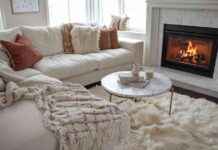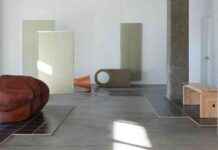Dog-friendly décor is no longer niche—it’s a serious part of interior design trends today. As more people consider dogs health when choosing furniture and layout, the integration of pet comfort into home aesthetics doesn’t have to compromise style. From selecting durable materials to the right kind of bedding, thoughtful choices reduce wear, mess, and risk—including preventing unexpected dog bites driven by discomfort or stress.
Why Interior Design Needs to Think “Paw First”
Households with pets now invest more in their spaces when designing or re-decorating. Pet-friendly design has grown into a strong lifestyle trend, and for good reason. Dogs that live in poorly thought-out spaces can experience more stress, physical discomfort, and even behavioral issues. Ensuring rest areas that support posture and allow pets to retreat when overstimulated is essential. A properly designed home helps maintain dogs health and reduces triggers for aggression or pain-driven dog bites.
Materials, Fabrics & Surfaces That Balance Style with Durability
One of the biggest challenges in keeping homes beautiful with dogs is choosing the right surfaces. Pet-friendly fabrics and finishes are now a necessity. Upholstery materials like microfiber, treated leather, or high-rub-count synthetics perform well under claws and paws. Loose weave fabrics, on the other hand, can snag easily and should be avoided.
For flooring, natural stone, porcelain tiles, or luxury vinyl are durable, easy to clean, and resistant to scratches or accidents. Rugs in high traffic areas protect floors and can be washed regularly. Solid wood with strong finishes also works, especially when combined with washable area rugs. These smart design choices prevent wear while ensuring a healthier living environment for pets.
Incorporating the Right Dog Beds into Your Design
Furniture isn’t the only thing to plan carefully—your dog’s resting spot is just as critical. Having a proper dog bed can greatly affect mood and health. Here are key types:
Orthopedic dog beds: Support joints and are especially beneficial for older or large breeds prone to hip and elbow issues.
Memory foam dog beds: Mold to the dog’s body, reducing pressure points, improving sleep, and decreasing soreness.
Chew proof dog bed: For teething puppies or anxious dogs, these resist damage and prevent dangerous ingestion.
Raised dog bed: Keeps the dog off cold or damp floors, improves airflow, and adds pest protection.
Cooling dog bed & heated dog beds: Regulate temperature; cooling options help in warm weather, heated ones in cold months.
Waterproof dog beds and washable dog beds: Essential for hygiene—easy to clean, resistant to accidents or outdoor dirt.
Large dog beds for bigger breeds who need room to stretch, and small dog beds for toy breeds who prefer snug, enclosed comfort.
Selecting the right type not only enhances comfort but also reduces risk. Dogs that sleep well are calmer and less prone to aggression.
Designing Home Features with Pets in Mind
Beyond beds and fabrics, good design takes into account the ways pets use space:
Designated Rest Nooks: Built-in alcoves or custom cubbies allow dogs a safe retreat when they want privacy or rest. These can hide dog beds so they blend seamlessly into cabinetry.
Feeding Stations and Wash Zones: Mudroom or laundry areas with easy-clean flooring and pet wash sinks keep dirt out of main living spaces. Poor hygiene can frustrate dogs and even contribute to stress-based dog bites.
Outdoor Spaces: Patios or porches fitted with durable outdoor dog beds allow pets to rest safely outside while protecting against moisture or uneven ground.
Smart Furniture Integration: Cabinets or benches with removable cushions, hidden pet zones, or washable covers make living with pets both stylish and practical.
Size, Comfort & Behavioral Safety
Design considerations must match dog size, breed temperament, and behavior. Large breeds need large dog beds with firmer support, while small breeds prefer snug small dog beds for security. Dogs that cannot rest properly due to poor bedding or uncomfortable flooring often show their frustration through pacing, barking, or snapping. Disrupted rest can escalate into biting behavior if the animal feels cornered or disturbed.
Chewing is another common challenge. Providing a chew proof dog bed along with safe chew toys prevents damage to furniture and keeps pets safe. Climate also plays a role—discomfort from heat or cold can irritate dogs. Investing in a cooling dog bed or heated dog beds ensures comfort year-round.
Preventing Dog Bites Through Comfort & Observation
Understanding why dogs bite is essential in pet safety. Triggers include fear, pain, territorial instincts, or lack of a comfortable resting area. A dog forced to lie on a hard, cold floor without a proper dog bed may become defensive if approached. By offering the right bedding, maintaining a quiet rest area, and respecting the pet’s boundaries, owners can reduce the risk of bites dramatically.
Recognizing early signals such as growling, stiff posture, or avoiding contact gives humans the chance to intervene before a bite occurs. Safe spaces, regular cleaning of washable dog beds, and supportive bedding options like orthopedic dog beds and memory foam dog beds all contribute to calmer behavior and reduced aggression.
Styling Dog Beds Into Decorative Schemes
Pet comfort doesn’t have to clash with style. Modern designers create the best dog beds that are sleek, minimalist, and match contemporary interiors. Many come in neutral tones, luxury fabrics, and shapes that look like designer furniture. Built-in solutions—such as a raised dog bed fitted into cabinetry or a custom frame—help integrate the dog’s sleeping spot seamlessly into the décor.
Layering throws, washable covers, or stylish cushions over durable bases makes pet spaces both attractive and practical. By blending design and comfort, homeowners can keep a sophisticated look while providing maximum well-being for their pets.
Practical Tips for DecoArt.net Readers
Observe your dog’s habits—where they nap, how they stretch, and whether they prefer firm or soft bedding. Match dog beds to these patterns.
Use washable covers and washable dog beds to simplify cleaning and maintain hygiene.
Rotate bedding seasonally—cooling dog bed in summer, heated dog beds in winter.
Choose waterproof dog beds for outdoor use and messy pups.
If your dog chews aggressively, a chew proof dog bed prevents frustration and damage.
Make bedding part of your décor—select colors and textures that harmonize with your furniture.
Respect your dog’s space—teach children not to disturb dogs when resting to minimize the risk of dog bites.
Conclusion: Comfort + Design = Happier, Safer Homes
For home design enthusiasts, the message is clear: integrating pet comfort into interior décor is not just practical, it’s essential. By choosing the right dog beds—whether orthopedic, memory foam, washable, waterproof, or chew proof—and ensuring your dog has safe, dedicated spaces, you support both dogs health and household harmony. When pets are well-rested and comfortable, they’re less anxious, less destructive, and far less likely to resort to aggression. Beautiful homes aren’t just for people—they’re for pets too.












